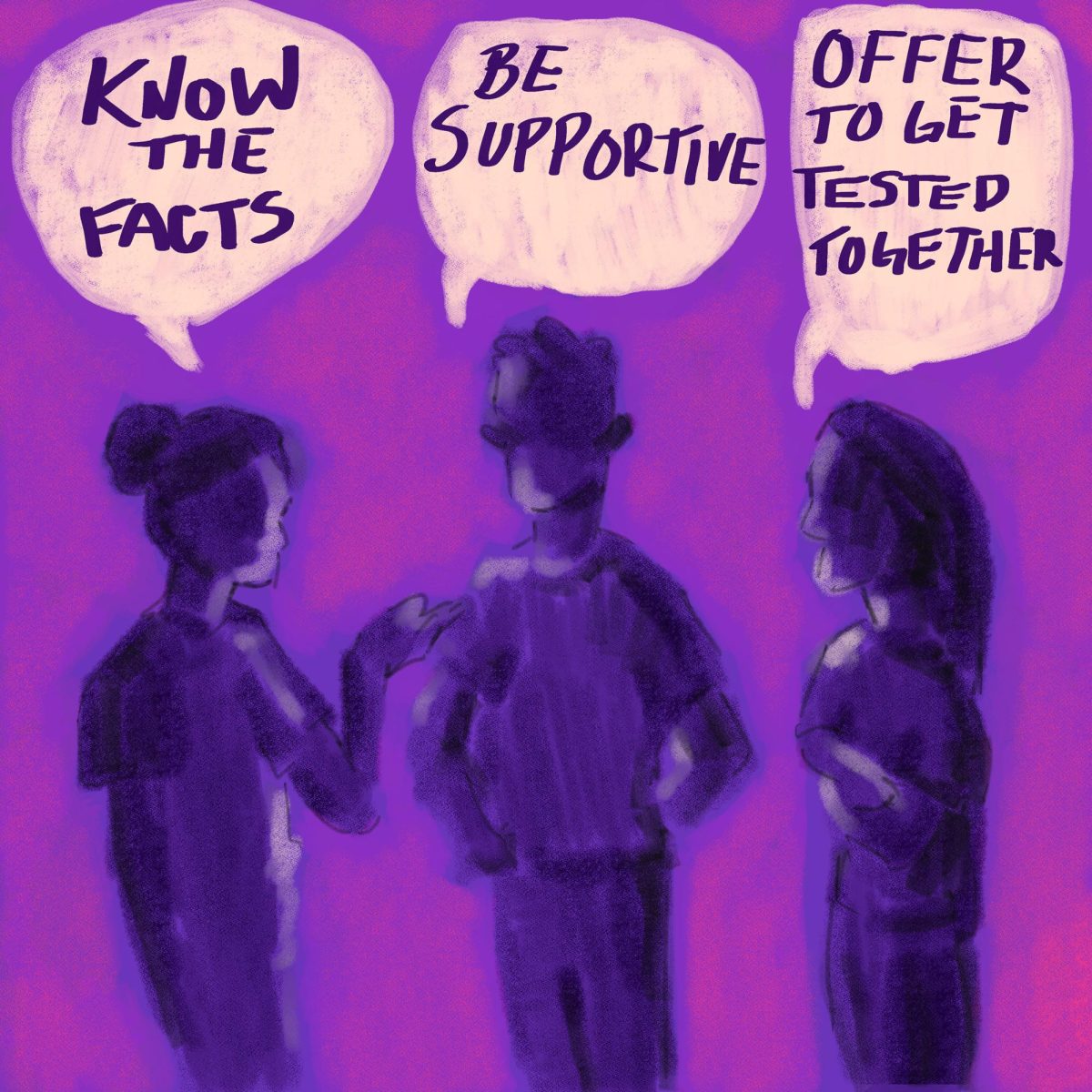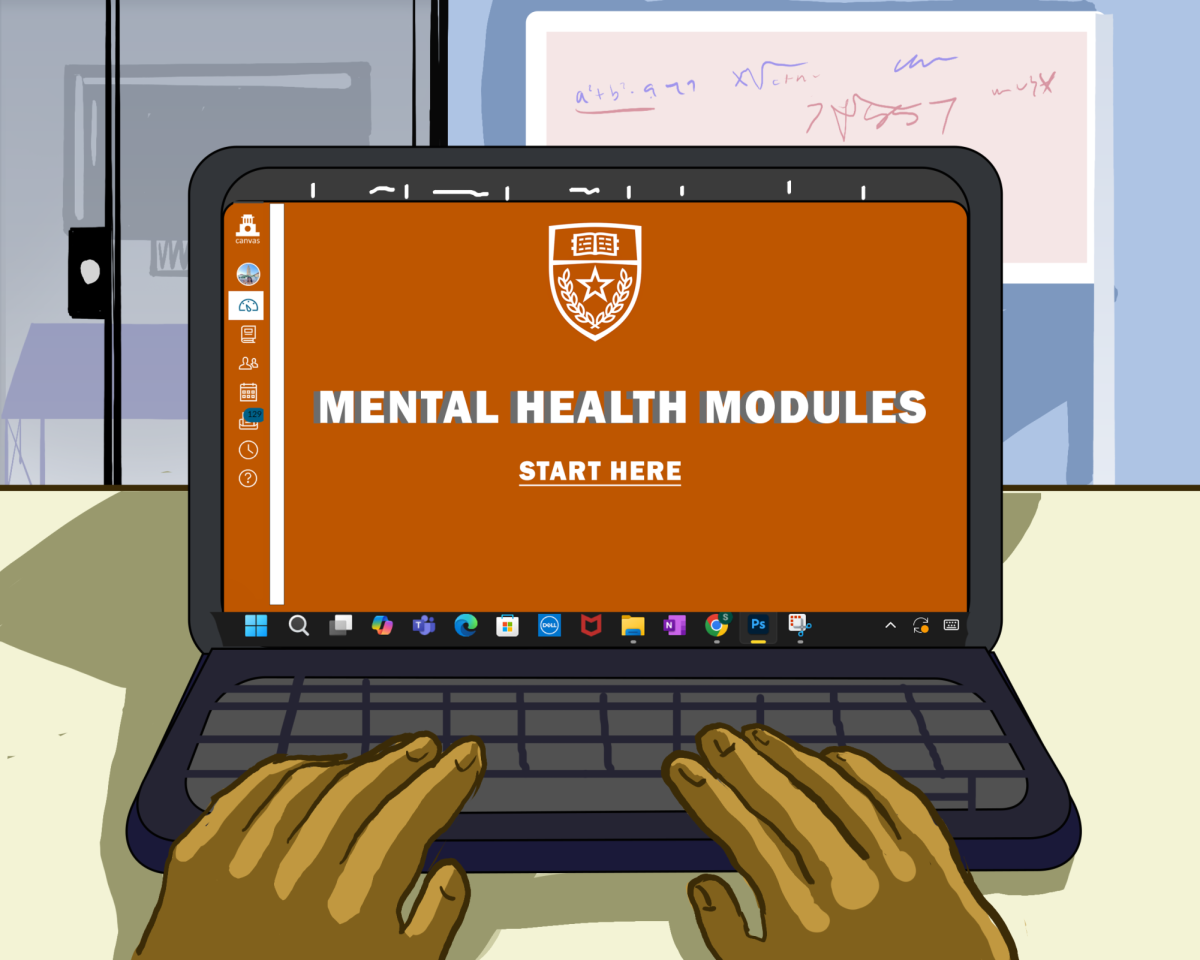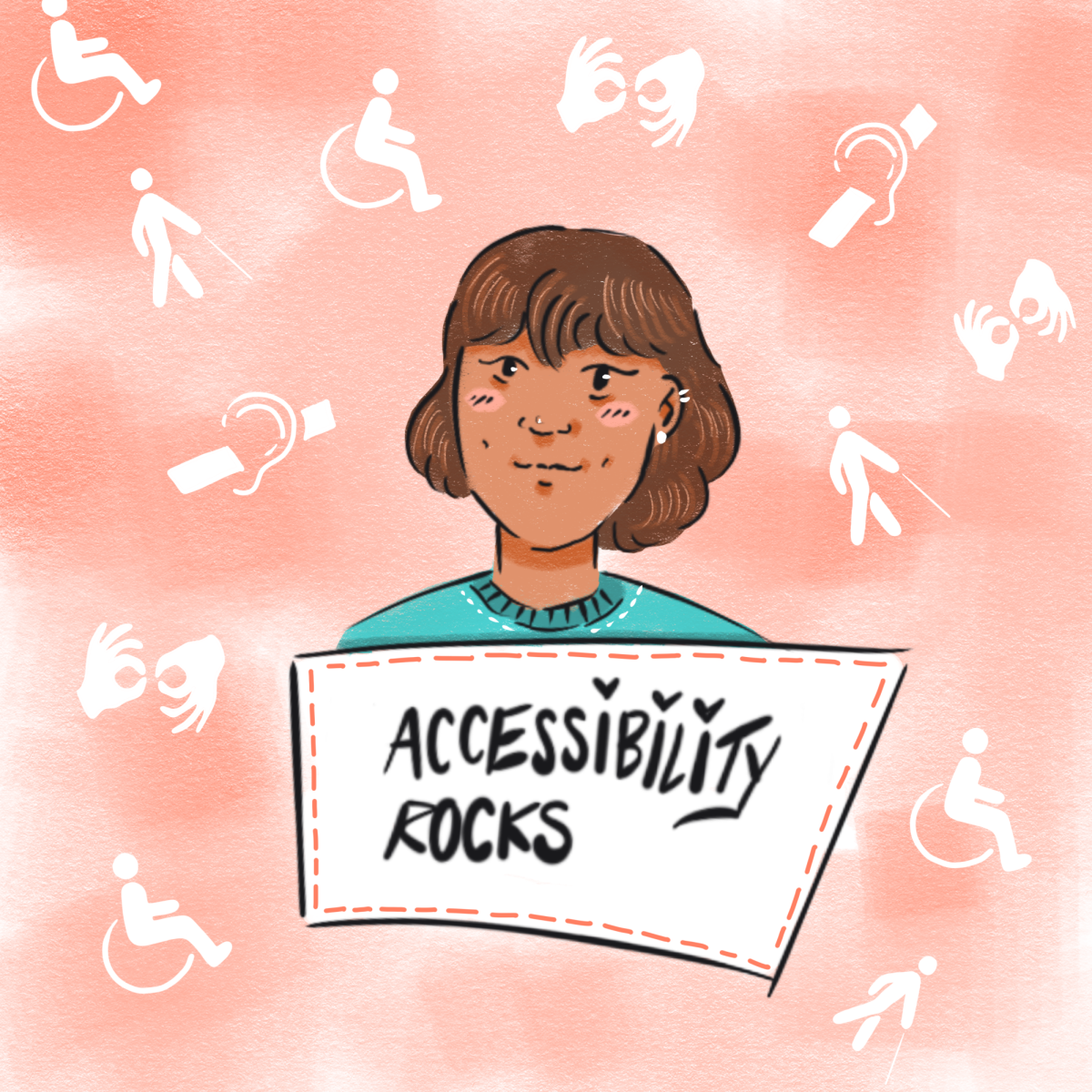Experts say half of all sexually active people are predicted to get a sexually transmitted infection by age 25. But STIs remain a taboo topic for many people.
“A lot of people are unaware that these diagnoses are not the end of your life,” said Ariana Williams, a public health program specialist in the Austin Public Health Communicable Diseases Unit.
That was how human biology junior Lydia Mendoza felt when she tested positive for chlamydia and herpes type one.
“I was freaking out,” Mendoza said. “The first day, I was like, ‘Oh my God, my life is over. I’m never going to find someone. Everyone’s going to be disgusted by me.’”
According to the U.S. Centers for Disease and Control Prevention, a sexually transmitted infection is a virus, bacteria, fungus or parasite that can be spread through sexual contact, while a sexually transmitted disease develops because of that infection. Many STIs cause little or no symptoms, so people can have an infection without knowing it.
Stigma has always gone hand in hand with conversations on STIs, with the HIV/AIDS epidemic one of the most notable examples of the harms of stigma and the misinformation it causes. The marginalization of women, people of color and the LGBTQ+ community, amongst whom rates of STIs are generally higher, contributes to stigma and a lack of resources and education on STIs. Williams said stigma also comes from the association of STIs with promiscuity, as some people believe STIs are a reflection of a person’s behavior.
Williams said the social stigma attached to STIs can often prevent people from getting tested, and it is also linked with the underutilization of prevention services.
STIs are common in America and on college campuses alike. In 2010, researchers at Washington and Lee University found that one in four college students had contracted a sexually transmitted infection. The CDC reported that over 2.5 million Americans tested positive for an STI in 2022.
Mendoza got tested for STIs for the first time this past June, after experiencing intense pain that she couldn’t explain. She tested positive for both STIs even without any of the common symptoms.
Williams said that people shouldn’t wait for symptoms to test for STIs, but should test every three to six months or after each new partner; whichever comes sooner. She also stressed the importance of knowing the resources that are available, including dental dams, internal and external condoms, PrEP and PEP HIV prevention pills and others that are accessible at any number of urgent care and testing clinics.
Since over one million STIs are acquired every day, Williams said awareness is the first step in the diagnosis process, especially as many patients may be unaware of the nuances of their disease.
“When one of my patients tests positive, the first thing I ask them is, ‘Do you know what this is?’” Williams said. “I explain, ‘Oh, this is a virus. This is a bacteria that is transmitted or spread this way.’ A lot of people don’t even have an awareness of what (an STI) is.”
Anthropology sophomore Bella Comer said she never learned much about STIs in sex education in high school, partially due to the lessons being given during online school in the pandemic.
“We had this really brief online unit, but that was over quarantine so everybody cheated and sped through it,” Comer said. “I don’t have a very general knowledge (on STIs). I feel like I should know more.”
Although she hasn’t had an STI herself, Comer said she understands why people might feel a stigma when they’re diagnosed.
“I can see it as being something scary and embarrassing to talk about because it feels sometimes almost shameful, like you did something wrong and you got caught doing something wrong,” Comer said.
Brittany O’Malley, the associate director for prevention and wellness at the Longhorn Wellness Center, said the center’s sexual health branch “Healthyhorns Play it Safe” aims to destigmatize STIs through equipping students with knowledge and resources.
“We really focus on promotive health behaviors, meaning we focus less on the idea of fear or shame, and more on the idea of having knowledge to make mindful decisions,” O’Malley said.
O’Malley said that initiatives like their sexual health workshop, hosted by long-term peer wellness educators, help to create a safe, non-judgmental space.
“There’s evidence that shows peer-to-peer education around certain topics is actually destigmatizing and really effective,” O’Malley said.
After getting diagnosed, Mendoza dove into research about chlamydia and herpes type one, which she previously knew nothing about. Each STI is different and different diagnoses require different medicinal cycles, Williams said.
“Most people take antibiotics and then the infection clears up,” Williams said. “People who are living with HIV are taking medication consistently (until the STI) becomes what we call undetectable, and that means that HIV cannot be transmitted to another person.”
Mendoza said she treated the chlamydia with a one-time pill that cleared up the infection. Herpes requires daily medication to keep the infection undetectable. That daily pill was the only physical change that Mendoza had to make, but the emotional and mental changes had a greater impact on her life.
“I (had) to change the way I go about things,” Mendoza said. “I obviously had to tell my friends too. I don’t want anyone to feel uncomfortable with sharing a drink with me … And then I was thinking that these conversations are going to be so hard that I am going to have to have with a future boyfriend.”
Despite certain beliefs or past attitudes, Williams urges her patients and those around them to remember that STIs do not define a person.
“I’ve seen everyone — old, young, people who have only one partner, people who have several partners — (get an STI),” Williams said. “There’s no face of any particular STI.”
Mendoza said that everyone around her showed their support after she disclosed her diagnoses. Her friends trusted her to share drinks, her parents helped her through the process and new partners haven’t shied away from her.
Today, Mendoza cites only one more lifestyle change because of the diagnosis, something that both Williams and O’Malley also urge students to do — testing regularly.
“I went back at the beginning of this year to get tested again,” Mendoza said. “Getting tested regularly is definitely something (important). And all my friends are like, ‘Oh, we need to do that too.’”
Comer said she has never thought about getting tested, but her first instinct would be to go to Planned Parenthood or the University Health Services. UHS provides testing and treatment for a variety of STIs.
“If you thought you were going to catch something or spread something, you should do something to stop that, to take care of your own health and also the health of others,” Comer said.
Mendoza said she tries to be open about her diagnoses to overcome her own stigma, and one of her friends has already reached out about symptoms she was experiencing. Mendoza encouraged her to get tested and said her perspective on her own situation changed once she was in the position to provide support and advice.
“Don’t let it define you,” Mendoza said. “You’re not a dirty person. It can happen to anyone. Let yourself sit with it, lean on your friends and people you trust to help you through that.”














